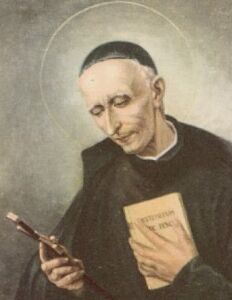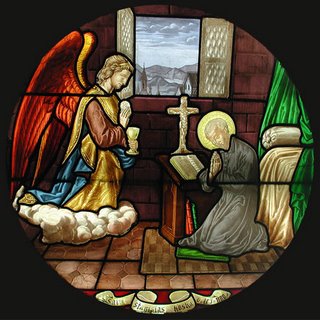At a Bronx school, Latin is the root of all learning.
If you've ever questioned the value of the Latin language, you should read this article in today's New York Times on a new experiment in public education taking shape in the South Bronx:
At the Bronx Latin School, one of New York's multiplying number of small themed public middle and high schools, Latin is what Alfred Hitchcock used to call the MacGuffin: a plot device that grabs our attention while the story has a larger purpose.Read the rest of the NYT article to learn more about Bronx Latin's promise as well as the considerable challenges that the young school faces. I disagree strongly with the naysayers who might consider Latin a kind of elitist anachronism and question the utility of teaching classical languages to disadvantaged urban students. The real elitism, it seems to me, is the attitude that suggests that education for the poor should focus purely on "practical" vocational skills and treats disciplines like Latin as a useless luxury. Students in the South Bronx have as much right to learn Latin as their cohorts in wealthy suburban school districts and, in some sense, they might benefit more from it. I hope and pray that the experiment underway at Bronx Latin School will be successful. More importantly, if Bronx Latin succeeds, I hope to see other schools like it. AMDG.
The school's larger purpose is simple: to get students, most of them "struggling with literacy," as the founding principal, Leticia Pineiro, said, to read and also to do math at grade level or better.
The three-year-old school is gambling that teaching Latin will initiate poor and working-class students into the mysteries of how any language - especially English - works by illuminating the long-neglected art of grammar and enriching their English vocabulary with Latin roots.
In Peter Dodington's seventh-grade class the other day, the talk was about Latin verbs. With "portat" - he, she or it carries - Mr. Dodington, 61, elicited from his students English derivatives like portable and teleport. That led to a discussion of the Greek root, tele, for far off, which yielded a new understanding of how words like telephone (sound that travels far) and telegraph (writing that travels far) are shaped.
The class then switched to translating the fable about a shepherd saved from having to fight a lion because he had pulled a thorn from its paw. The story was right out of the textbook "Cambridge Latin Course," used by elite private schools, and the students seemed to enjoy translating phrases like "cur lacrimas, leo?" and "cur me non consumis?" "Why are you crying lion? Why don't you eat me?" In the era of Harry Potter and recondite medieval mysteries, the students seemed enchanted by Latin's esoteric, exclusive aura.
"Nobody knows what you're talking about," said a proudly grinning Christian Graham, 14.
A visit to Bronx Latin suggests that its approach may be working. Morever, on this year's state English test, 50.9 percent of seventh graders read at grade level or better while only 31.8 percent of seventh graders in the surrounding South Bronx region performed that well.



